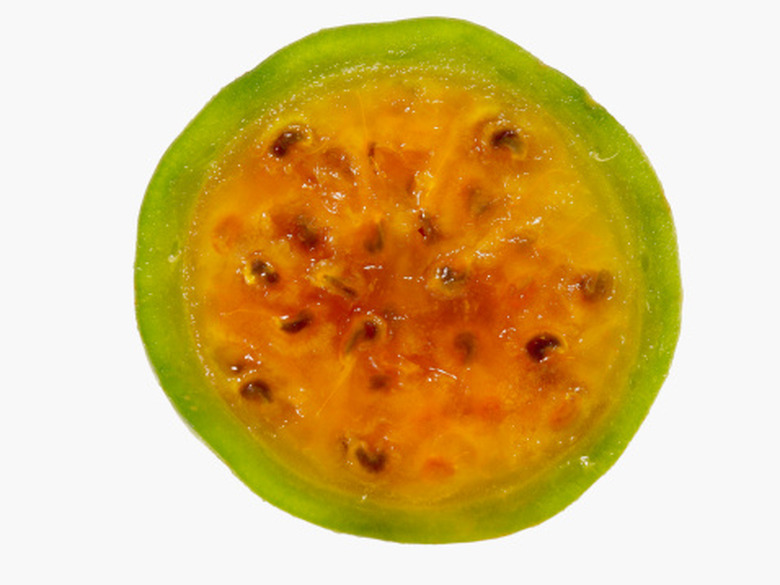How To Make A Guava Tree Bear Fruit
Things Needed
-
Urea
-
Wetting agent
-
Water
-
Hose
-
Receptacle hose end sprayer
-
Fertilizer (8-3-9-2)
-
Trowel or hoe
-
Pruners
-
Small artists paintbrush
Guavas are flavorful tropical fruits that grow on a small tree with characteristic copper colored bark that peels off in curls. The fruit has a rich pungent smell when ripe and is yellow and softly blushed, either oval, round or pear shaped. The plants are probably native to South and Central America but have been introduced to warm climates around the world, according to Purdue University. The trees grow quickly and can begin producing fruit as early as two years after being planted from seed. Guava usually are grafted onto appropriate root stock. Mature trees can bear 100 to 300 fruits in a season, which may include a second bearing in warm climates.
Step 1
Situate your guava in a sunny location. It needs sunlight to provide the huge amount of energy it takes to flower and fruit. Guava trees do not produce fruit for several years, and may take up to four years to bear fruit.
Step 2
Spray your guava tree just before flowering in the spring. Use a 25 percent solution of straight urea mixed with a wetting agent. Follow the instructions on the amount of wetting agent to add. Combine with the recommended amount of water in a hose end receptacle sprayer. Coat all the surfaces of the producing limbs. Allow enough time for the urea spray to dry before watering or rains. The urea has been found to increase the time of fruit production.
Step 3
Apply a fertilizer high in potash or potassium to increase fruit production and health. Spread 1 pound of 8-3-9-2 fertilizer around the base of the tree at the root zone and work in with a trowel or hoe. Guava need fertilizer three to four times per year evenly spaced out; however, they should not be fertilized in late fall or winter except in very tropical zones. Late season fertilizing encourages growth and fruiting, which is inappropriate in cooler climates and could damage the tree.
Step 4
Allow the tree to dry out for two to three weeks. Water restriction causes the tree to begin reproduction defense mechanisms that result in flowering. After withholding water, tip prune the branches to stimulate new growth. Remove older wood 3 to 4 inches into the branch and cut just before a growth node, or the swelling on the wood that will form new growth. Guava will flower and fruit off the new green twigs that will form where you cut.
Step 5
Hand pollinate the flowers. Honeybees do most of the pollination of guava flowers, but in an absence of sufficient bees, you may have to step in. Use a very small artist's paintbrush and tickle the inside of flowers. This spreads the pollen to each bloom and fertilizes them so they can produce fruit.
